Couple of weeks back, I spoke to Aunty Crystal about her memories of growing up at Hearsch bakery, (here’s the link in case you haven’t read it - The Girl Who Grew Up In A Bakery) and her eyes lit up when she spoke about hot gutli pav slathered with Polson’s Butter. Our idea of heaven is what she called it.
It stuck in my head. This very English sounding butter. And here’s what I discovered. Polson’s was started by a Parsi gentleman called Pestonjee Edulji Dalal, who in 1888, started selling coffee in Bombay. Wait a minute, he was a dude, because he was only 13 when he set up this coffee business. Now Polly, as he was known, was obviously way ahead of his time, because in 1900, at the ripe old age of 25, he decided to trademark the name Polson’s, which of course was a play on his nickname, and yet sounded very English.
Around this time the British army was having problems getting good quality butter to its soldiers. And the story goes that a British customer who was in the Supply Corps, told Pestonjee about this. Talk about how far having a cup of coffee with someone can take you!
By 1915, the ever enterprising Pestonjee had started marketing and selling butter, cheese, flour apart from coffee, under the Polson’s trademark. And that’s when the fun started!
It all began at Anand, a place in the Kaira district, Gujarat, famous for its Dairy Industry. It was ruled by some old players who started their dairy in the1890s, and 1910s. However during the 1920s a new entrant called as “Polson”, which was led by a shrewd but clever Parsi businessman known as “Pestonjee Edulji” entered the market. He started supplying Polson butter to the British Army and its milk products soon became a household name. He built a large dairy in Anand in the year 1930. Once he was asked by the Bombay milk scheme whether it was possible for him to supply milk from Anand to Bombay – some 350 kilometers away. Never before had liquid milk travelled such long distances, but Pestonjee was not the man who would let the opportunity go.
He pasteurised milk and transported it to Bombay in a rather primitive fashion in milk cans wrapped up in gunny bags with chilled water poured on the cans. The experiment worked and very soon Bombay became an important market for Polson.
Excerpt https://drkurien.com/journey
And Polson’s butter became a hit. First there was the distinct yellow colour, because they used cow’s milk. And second, was the salty taste that everyone seemed to love. Of course critics say that salt was added to cover the tanginess caused by fermentation. Another reason for its popularity was that Polly knew what Indians loved, a good redemption scheme. Every tin of Polson’s butter came with coupons or present tickets. You could keep collecting them, and eventually turn them in for gifts like crockery or toasters or other kitchen stuff.
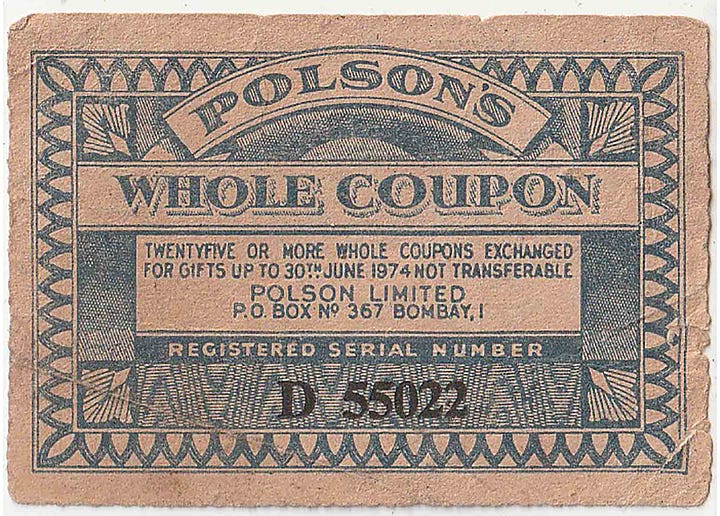
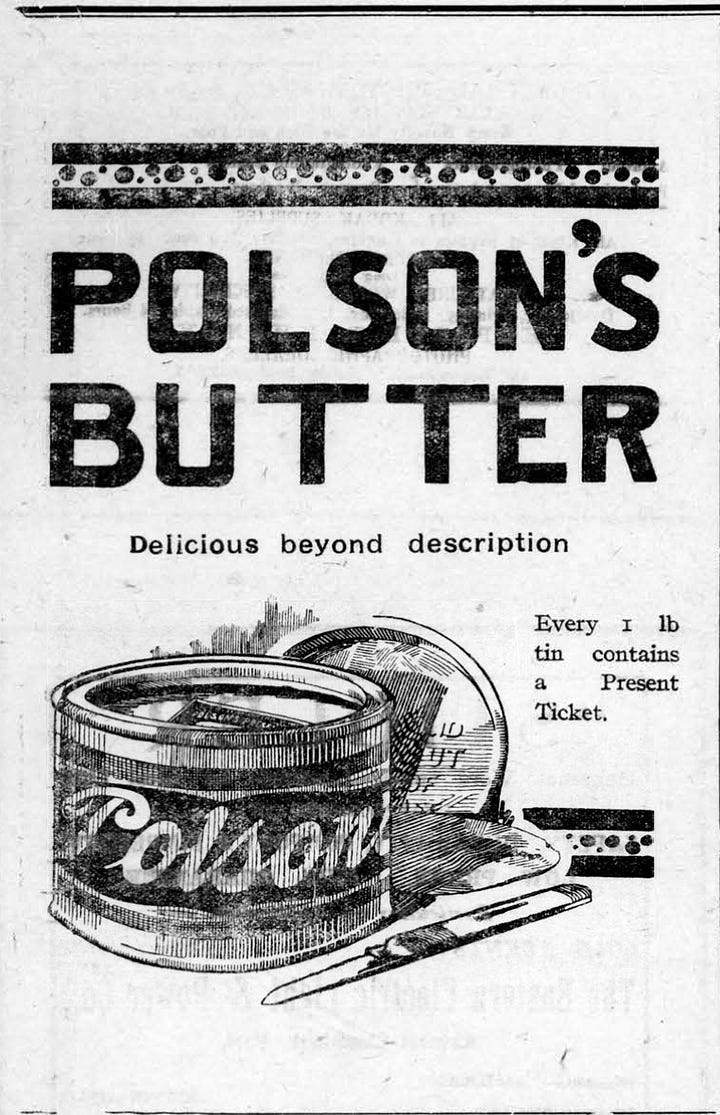
I was speaking to a friend, Farrokh Jijina, and he said even those who grew up in the 60’s and 70’s will have great memories of Polson’s, And he can still taste it in his mind. And then he left me this voice note.
Now, from what I gather, stuff was going swimmingly well for Pestonjee and Polson’s. He had great contacts with government officials, he was monopolising the milk market, and people were lapping up his yellow butter in its yellow tin.
That’s when things started to go south. Monopolising the milk market meant that farmers had no choice but to sell to Polson’s, at prices set by them. Around this time, Sardar Patel had a vision of building rural institutions that would benefit the community and the nation. This led to a chain of events where the farmers led by a Gandhian called Tribhuvandas Patel created their own cooperative. This cooperative would eventually become Amul.
In 1949, a young man arrived at the cooperative to serve his bond in return of a scholarship he got from the government. That was Dr Kurien, who created Amul. The butter that gave Polson’s an utterly butterly run for its money.
But wait, in a saga that’s like the saas bahu of butter, Amul bombed. Nobody wanted a white coloured butter that was bland. Amul was made with buffalo milk, which is why it was white. And second, they didn’t salt the butter because they were attempting to keep it fresh.
But that’s not what people wanted. By now everyone was used to Polson’s salted yellow butter. So much against his wishes, Dr Kurien had to bite the bullet, and add salt and yellow colouring to become like his competitior.
What happened next?
Due to certain policy decisions taken by the Central Government, the dairy sector witnessed sharp changes as under the Government policy, the dairy business was reserved for the Co-operative Sectors and certain restrictions were gradually imposed on the free operations of the private sector dairy corporations.
Excerpt from Indian Case Laws
And that’s how it was curtains for Polson’s Butter. Some part because of government policy, some part because of Amul and some part because they grew too big for their … bread. But guess what, even today butter has to be yellow and it has to be salty. And that’s the legacy Pestonjee left.
PS: I was talking to my dad about this. And he told me that there was a time when you didn’t say he’s trying to butter up someone. You said he’s putting Polson’s on someone!
Thanks for getting to this point. Here’s something for you. A set of Polson’s Coffee tin labels to geek over.
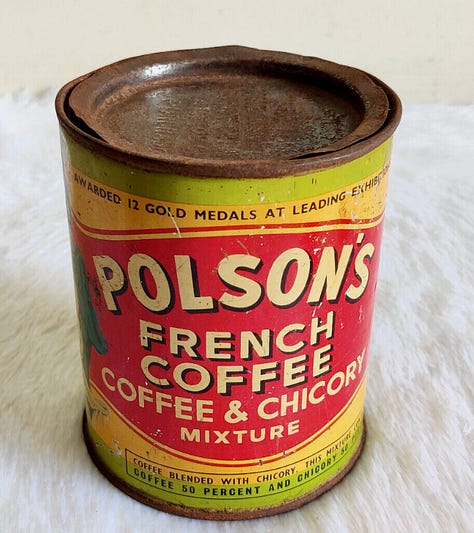

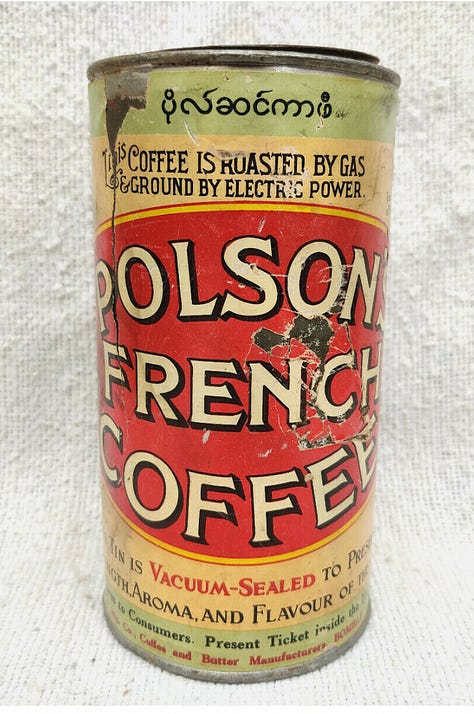
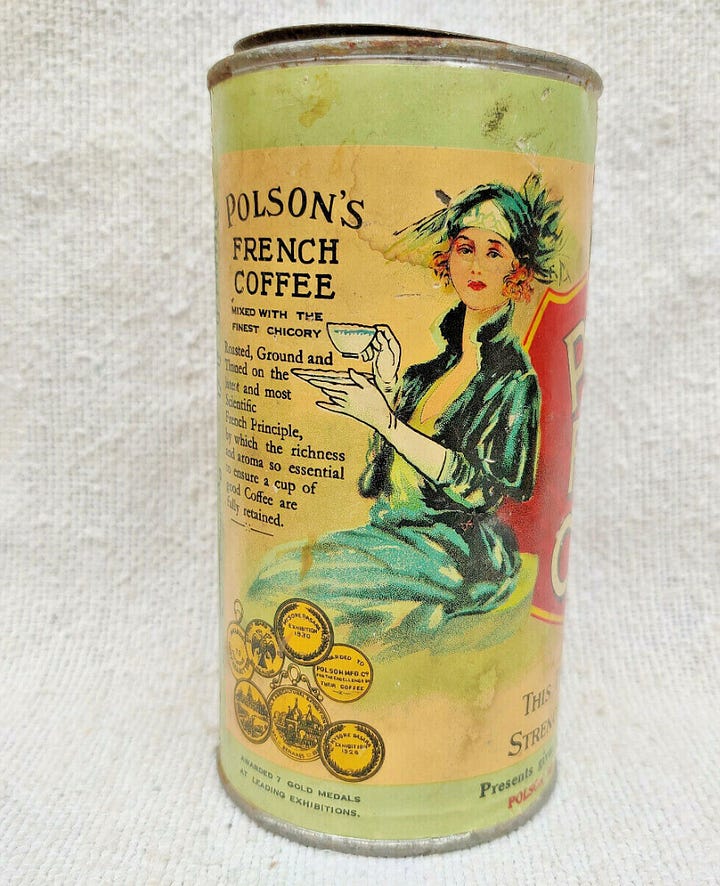
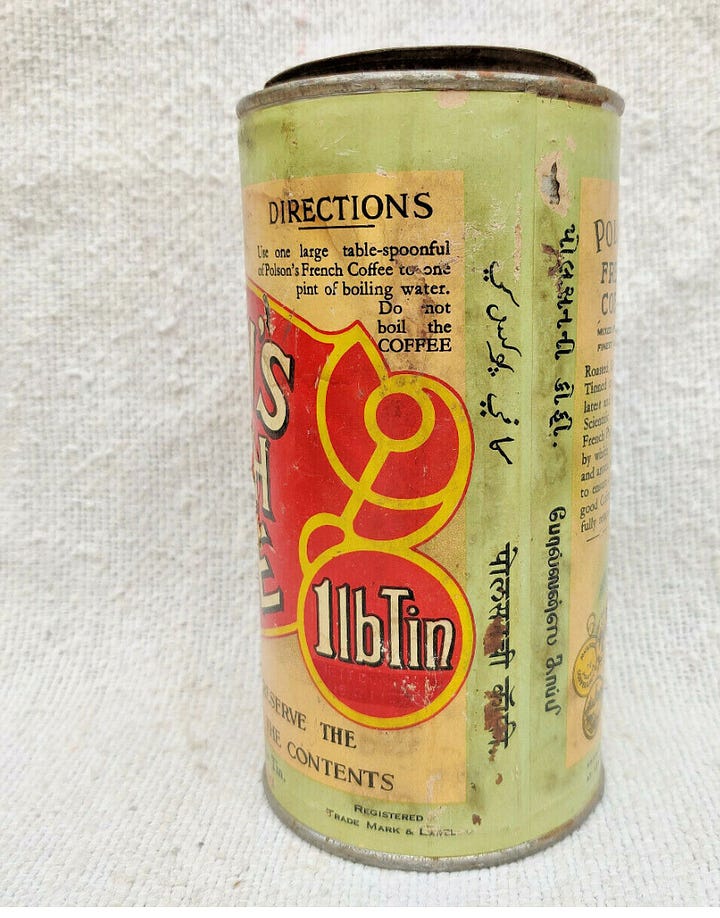
Thank you Aunty Crystal for putting me on to this. Once again, HERE is the link to her memories of growing up at Hearsch’s bakery. Thank you Brian, for being my chaser. Thanks FJ for speaking to me about Polson’s. And thank you to the Asiatic Society Of Mumbai for its digital archives.
Sources: https://parsikhabar.net/food/the-story-of-polson-butter/712/ https://indiancaselaws.wordpress.com/2015/06/16/polson-ltd-v-polson-dairy-ltd-and-ors/ https://parsikhabar.net/about/polson-butter-and-the-bihar-connection/4861/ (this is a fun read. If anyone goes to Patna, please tell me, I want a picture of Pestonjee’s bust) https://drkurien.com/journey/
I could not lay my hands on Ruth Heredia’s The Amul India Story, but it seems to be the place to go to if you want to know more about the butter & milk war!







Your posts are beautiful, heartwarming and interesting. I love everything about it though I have always been more into food stories. And am wondering if there are such projects happening in other parts of India. Through your posts you have painted a lovely intro to Bandra.
What a story! Love it.